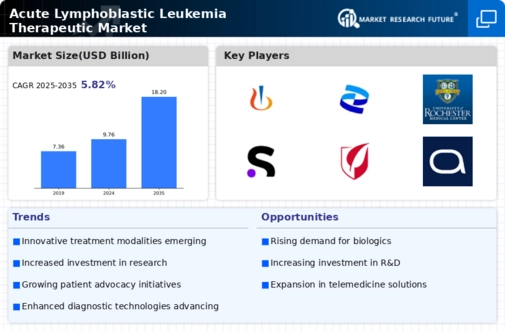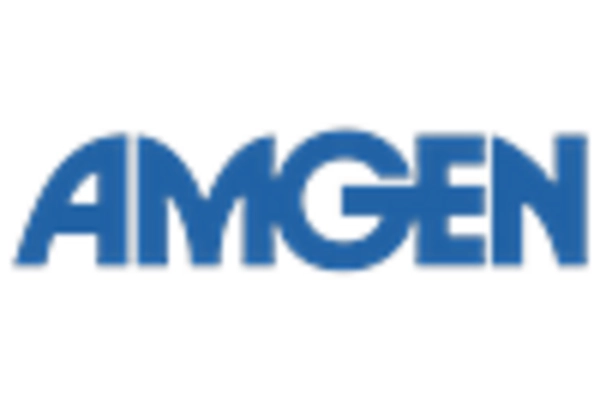The Acute Lymphoblastic Leukemia Therapeutics Market is characterized by a dynamic competitive landscape, driven by innovation, strategic partnerships, and a focus on patient-centric solutions. Major players such as Novartis (CH), Bristol-Myers Squibb (US), and Pfizer (US) are at the forefront, each employing distinct strategies to enhance their market presence. Novartis (CH) emphasizes its commitment to research and development, particularly in CAR T-cell therapies, which have shown promising results in clinical trials. Meanwhile, Bristol-Myers Squibb (US) focuses on expanding its portfolio through strategic acquisitions, enhancing its capabilities in immunotherapy. Pfizer (US) is leveraging its extensive distribution network to ensure accessibility of its therapies, while also investing in digital health solutions to improve patient engagement and adherence. Collectively, these strategies contribute to a competitive environment that is increasingly centered on innovation and patient outcomes.
In terms of business tactics, companies are localizing manufacturing and optimizing supply chains to enhance efficiency and reduce costs. The market structure appears moderately fragmented, with several key players holding substantial market shares. This fragmentation allows for a diverse range of therapeutic options, but also intensifies competition among the leading firms, as they vie for market leadership through differentiated offerings and strategic collaborations.
In November 2025, Novartis (CH) announced a groundbreaking partnership with a leading biotech firm to co-develop a next-generation CAR T-cell therapy aimed at improving efficacy and reducing side effects in pediatric patients. This collaboration is strategically significant as it not only enhances Novartis's product pipeline but also positions the company as a leader in innovative treatment options for acute lymphoblastic leukemia, potentially setting new standards in patient care.
In October 2025, Bristol-Myers Squibb (US) completed the acquisition of a smaller biotech company specializing in novel immunotherapies. This acquisition is likely to bolster Bristol-Myers Squibb's existing portfolio and accelerate the development of new therapies, thereby reinforcing its competitive edge in the market. The integration of innovative technologies from the acquired firm could lead to enhanced treatment modalities that address unmet medical needs.
In September 2025, Pfizer (US) launched a digital health initiative aimed at improving patient adherence to treatment regimens for acute lymphoblastic leukemia. This initiative, which includes a mobile app for tracking medication schedules and side effects, is indicative of Pfizer's strategic focus on digital transformation. By enhancing patient engagement through technology, Pfizer aims to improve treatment outcomes and solidify its position in the market.
As of December 2025, current trends in the Acute Lymphoblastic Leukemia Therapeutics Market indicate a shift towards digitalization, sustainability, and the integration of artificial intelligence in drug development. Strategic alliances are increasingly shaping the competitive landscape, allowing companies to pool resources and expertise to accelerate innovation. Looking ahead, competitive differentiation is likely to evolve from traditional price-based competition to a focus on technological advancements, innovative therapies, and reliable supply chains. This shift underscores the importance of adaptability and forward-thinking strategies in maintaining a competitive advantage in a rapidly changing market.

















Leave a Comment